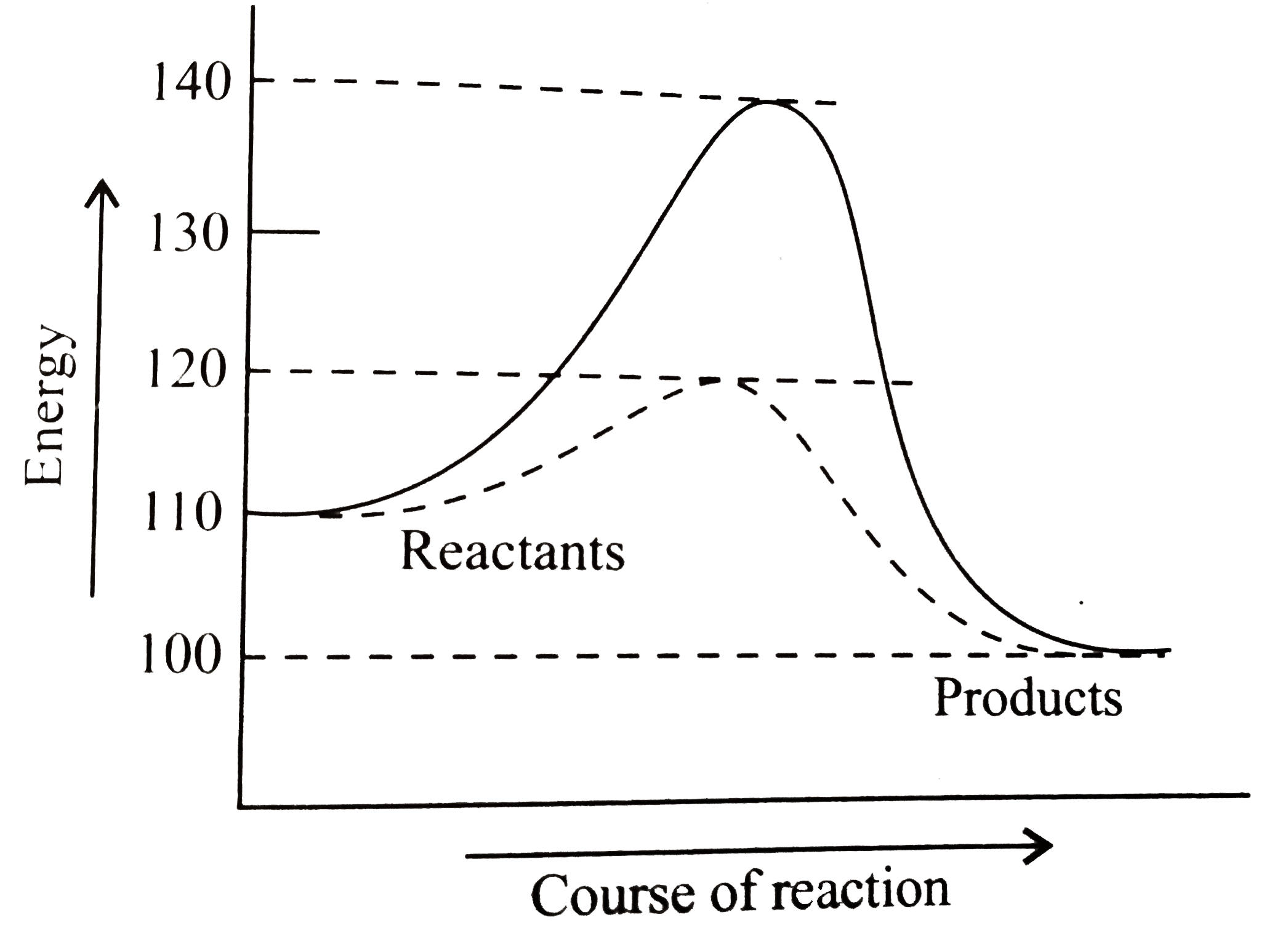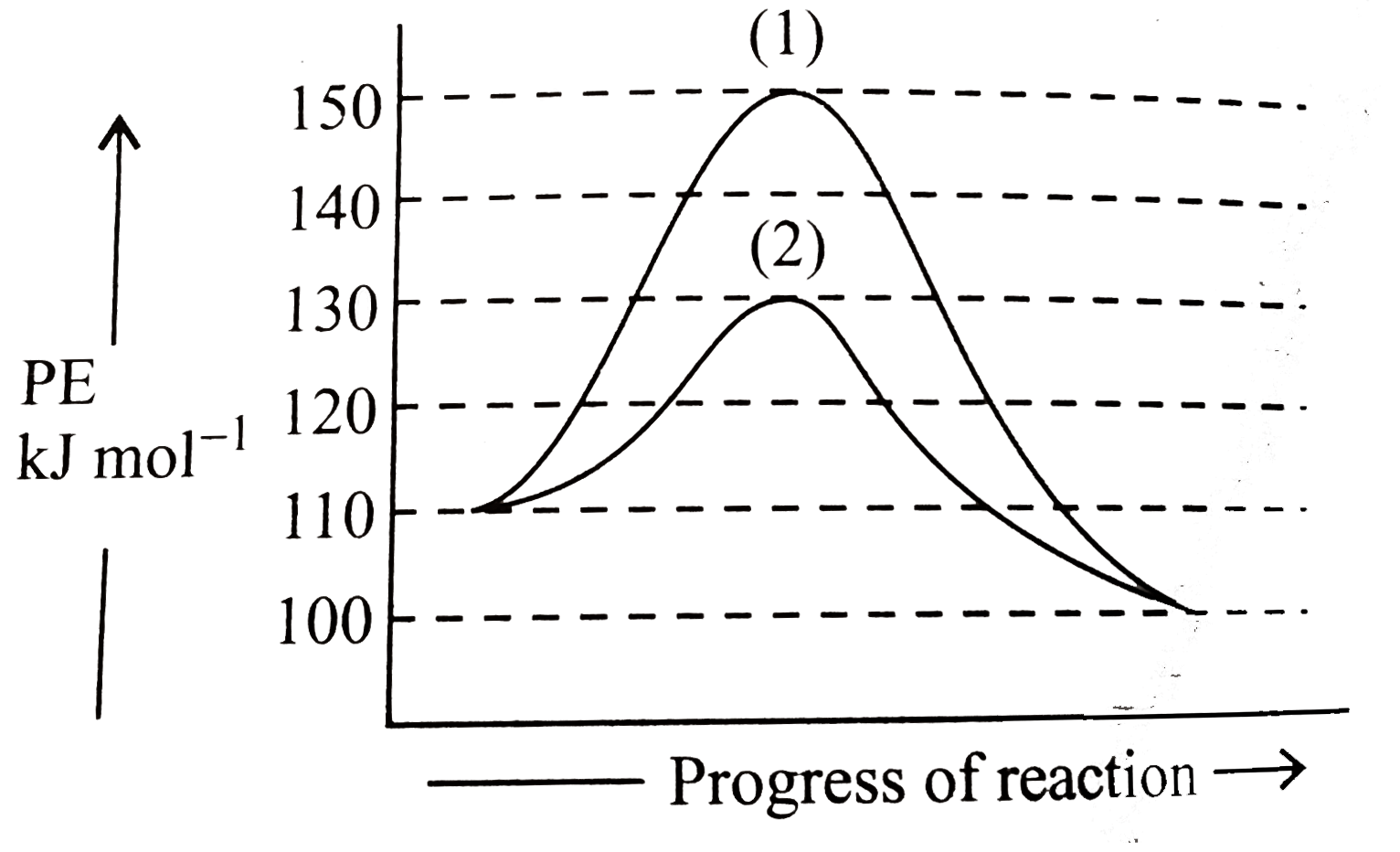Refer picture given below.
(a) Calculate ΔH for the reaction and the energy of activation for the forward reaction as well as backward reaction.
(b) The dotted curve is in the presence of a catalyst. What is the energy of activation for the two reactions in the presence of catalyst?
( c) Will the catalyst change the extent of reaction?

(a) ΔH=Ea(p)−Ea(r)=100−110=−10kJ
form the given picture, in the absence of catalyst, Energy of activation for the forward reaction
=140−110=30kJ
Energy of activation for the backward reaction
=140−100=40kJ
(b) In the presence of catalyst,
Energy of activation for the forward reaction
=120−110=10kJ
Energy of activation for the backward reaction
=120−100=20kJ
(c ) No
Topper's Solved these Questions
- BOOK - CENGAGE CHEMISTRYCHAPTER - CHEMICAL KINETICSEXERCISE - Ex 4.1 (Objective)9videos
CHEMICAL KINETICS
- BOOK - CENGAGE CHEMISTRYCHAPTER - CHEMICAL KINETICSEXERCISE - Ex 4.2 (Objective)10videos
CHEMICAL KINETICS
- BOOK - CENGAGE CHEMISTRYCHAPTER - CHEMICAL KINETICSEXERCISE - Archives Subjective23videos
CHEMICAL KINETICS
- BOOK - CENGAGE CHEMISTRYCHAPTER - CARBOXYLIC ACIDS AND THEIR DERIVATIVESEXERCISE - Exercises Archives (Analytical And Descriptive)34videos
CARBOXYLIC ACIDS AND THEIR DERIVATIVES
- BOOK - CENGAGE CHEMISTRYCHAPTER - COORDINATION COMPOUNDSEXERCISE - Archives Subjective18videos
COORDINATION COMPOUNDS
Similar Questions
Given the following graph.
(a) Calculate ΔH for the reaction and energy of activation for the forward and backward reaction.

(b) Curve (2) is the energy profile in the presence of a catalyst. What is the energy of activation for the two reaction in the presence of a catalyst?
( c) Will the catalyst change the extent of the reaction?View SolutionFrom the given figure:
i) Calculate ΔE for the reaction and energy of activation for the forward reaction and energy of activation for the backward reaction.
ii) The dotted curve is in the presence of a catalyst, what is the energy of activation for the two reactions in the presence of the catalyst?
iii) will the catalyst change the extent of the reaction?
 View Solution
View Solution
Knowledge Check
- Question 1 - Select One
In a reaction, which of the following changes in the presence of a catalyst?
AVelocity constantBThreshold energyCMechanism of the reactionDAll of these - Question 2 - Select One
For the reaction, for which the activation energies for forward and backward reactions are same, then:
AΔH=0BΔS=0CThe order is zeroDNone of these - Question 3 - Select One
When the activation energies of the forward and backward reactions are equal, then :
AΔU=0,ΔS=0BΔU=0,ΔG=0CΔS=0,ΔG=0DOnly ΔU=0
Due to the presence of catalyst the rate of reaction changes.
View SolutionThe rate of a chemical reaction changes in presence of catalyst.
View SolutionEnergy of activation for a reversible reaction is 6 kcal (Ea forward) and heat of reaction (ΔH) is −3 kcal. What is the energy of activation for the backward reaction?
View SolutionThe negative catalyst decreases the activation energy of a reaction.
View SolutionThe energy of activation of a forward reaction is 50 kcal . The energy of activation of its backward reaction is
View Solution

